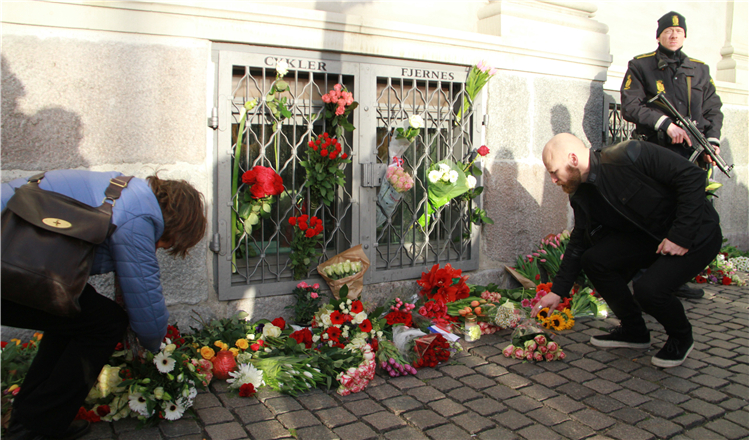Israel find may help solve mystery
Updated: 2016-07-11 09:06
By Associated Press in Ashkelon, Israel(China Daily)
|
||||||||
|
Archaeologists excavate an ancient Philistine cemetery near Ashkelon, Israel. The discovery in Israelmay help solve a biblicalmystery of where the ancient Philistines came from. Tsafrir Abayov / Ap |
DNA tests may show origins of the biblical Philistines
An archaeological discovery announced on Sunday in Israel may help solve an enduring biblical mystery: where did the ancient Philistines come from?
The Philistines left behind plenty of pottery. But part of the mystery surrounding the ancient people was that very little biological trace of them had been found - until 2013.
That's when archaeologists excavating the site of the biblical city of Ashkelon found what they say is the first Philistine cemetery ever discovered. They say they have uncovered the remains of more than 200 people there.
The discovery was finally unveiled Sunday at the close of a 30-year excavation by the Leon Levy Expedition, a team of archaeologists from Harvard University, Boston College, Wheaton College in Illinois and Troy University in Alabama.
The team is now performing DNA, radiocarbon and other tests on bone samples uncovered at the cemetery, dating back to between the 11th and the 8th centuries B.C., to help resolve a debate about the Philistines' geographical origins. The archaeologists have not announced any conclusions, saying they are taking advantage of recent advances in DNA testing to get the most accurate results.
"After decades of studying what Philistines left behind, we have finally come face to face with the people themselves," said Daniel M. Master, professor of archaeology at Wheaton College and one of the leaders of the excavation. "With this discovery we are close to unlocking the secrets of their origins."
A few human remains at Philistine sites had been discovered in past years, but they provided too small a sample to draw conclusions, he added.
The archaeologists kept the discovery a secret for three years until the end of their dig because of a unique hazard of archaeology in modern-day Israel: they did not want to attract ultraorthodox Jewish protesters, Master said.
"We had to bite our tongues for a long time," Master said.
In the past, the ultraorthodox have staged demonstrations at excavations where human remains are found, arguing that the remains could be Jewish and that disturbing them would violate a religious prohibition.
The Leon Levy Expedition itself faced ultraorthodox demonstrators in the 1990s, during the excavation of a Canaanite burial site.
In the Bible, the Philistines are depicted as the ancient Israelites' archenemy, a foreign people who migrated from lands to the west and settled in five main cities in Philistia, in today's southern Israel and the Gaza Strip.
The most famous Philistine was Goliath, the fearsome warrior who was slain by a young King David. The Philistines' legacy lives on in the name Palestine, the term the Romans gave to the region in the 2nd century, and which is used today by Palestinians.
Archaeologists and biblical scholars have long believed the Philistines came from the Aegean region, based on pottery found in excavations of Philistine sites.
But scholars have debated where exactly in the Aegean region the Philistines came from: mainland Greece, the islands of Crete or Cyprus, or even Anatolia, in modern-day Turkey.
The bones might hold the answers, said archaeologist Yossi Garfinkel, an Israeli expert on the period who did not participate in the dig. He called the cemetery find "a very significant discovery indeed."
The excavation of the cemetery has also shed light on Philistine burial practices.
- Eid al-Fitr celebrated worldwide
- Swedish PM looking at tightening laws after festival sex attacks
- British PM race cut to 3 hopefuls as 2 contenders exit contest
- Chinese herbalists offer free US treatment
- Obama praises Hillary's judgement hours after FBI's censure
- Rio mayor tells Olympic visitors: 'Don't expect New York or London'

 Griezmann scores twice to lift France into Euro final
Griezmann scores twice to lift France into Euro final
 Life goes on in flooded Wuhan
Life goes on in flooded Wuhan
 Paper cutouts offer a new view of world landmarks
Paper cutouts offer a new view of world landmarks
 Animals occupy Shanghai
Animals occupy Shanghai
 Beijing Muslims mark end of Ramadan
Beijing Muslims mark end of Ramadan
 Remember emerging heroes in China's floods
Remember emerging heroes in China's floods
 Ronaldo powers Portugal into Euro 2016 final
Ronaldo powers Portugal into Euro 2016 final
 Culture Insider: Six things you may not know about Minor Heat
Culture Insider: Six things you may not know about Minor Heat
Most Viewed
Editor's Picks

|

|

|

|

|

|
Today's Top News
Ministry slams US-Korean THAAD deployment
Two police officers shot at protest in Dallas
Abe's blame game reveals his policies failing to get results
Ending wildlife trafficking must be policy priority in Asia
Effects of supply-side reform take time to be seen
Chinese State Councilor Yang Jiechi to meet Kerry
Chinese stocks surge on back of MSCI rumors
Liang avoids jail in shooting death
US Weekly

|

|








